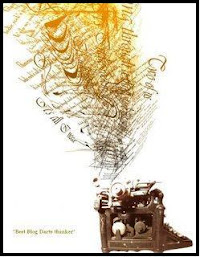Mardi Gras Background
I’ll start with a bit of Mardi Gras history so you can understand that it’s not just what you hear about and see on T.V. Where we go to view the parades, there is no flashing of the boobies or wee-wees. It’s a very family oriented atmosphere. I’m not saying that it’s all rainbows and kittens, but the blatant obvious sexualized part of Mardi Gras that people come to associate the holiday with does not occur where we view the parades.
A Mardi Gras type celebration started back in Rome, usually on Feb. 15. They called it Lupercalia.
When Christianity arrived in Rome, the church decided it was easier to incorporate some pagan traditions with the new faith. Who knows what would have happened if those chose not to incorporate these traditions? Anarchy, that’s what!!! LOL!!!!!
Carnival (as it’s also known) became a time of abandonment and celebration. This always precedes Lent. All aspects of merriment and abandonment regarding pleasures are considered “allowable” by the Christian faith during this time. Whoa, baby, that’s like allowing the bull to have free reign in a china shop.
Mardi Gras came to the US around 1699 by French explorer, Sieur d’Iberville. From 1827 to 1833 the New Orleans Mardi Gras celebrations became similar to what they are today. The Mardi Gras Ball started that year as well.
In French, Mardi Gras means Fat Tuesday. It always falls on the Tuesday before Ash Wednesday (you can check your calendars to find out when this is). Lundi Gras is the Monday before Ash Wednesday. Fat Tuesday is the last day before Lent. Lent is a 40-day season of prayer and fasting, which is observed by several religions. It ends on Easter Sunday. Because East Sunday can fall anywhere between March 23 and April 25, Mardi Gras can happen either in February or March. This year, it was at the beginning of February, which means that Easter will be early as well.
The beginning of the Carnival season, however, always starts on Twelfth Night (January 6th), which is the Feast of Epiphany.
In 1837, the first Mardi Gras parade was organized. In 1839, the first float appeared in the parades. The float was considered such a success that it turned into what you see on TV these days.
In 1857, the Krewe of Comus was the first organization to use the term “Krewe”. They also started the secret Carnival society, having a parade with a theme and a ball or gathering after the parade. It’s also the first Krewe to name itself after a mythological character.
Trivia:
The traditional colors of Mardi Gras are purple (symbolic of justice), green (symbolic of faith) and gold (symbolic of power). The Grand Duke Alexis Romanoff of Russia visited New Orleans and is the one who was given the honor of designated the official colors of Mardi Gras.
King Cakes are a tradition of Mardi Gras. Objects such as beans, coins, pecans and peas were hidden inside each cake originally. This switched to a small plastic baby during the mid 1900’s. The New Orleans tradition calls for the recipient of the baby in his/her piece of cake to be crowned the King or Queen of the day and that person has to bring the King Cake at the next year’s party.
Doubloons are thrown in almost every parade. A local artist and inventor, Alvin Sharpe, designed them. The coins are made of aluminum and can be dyed different colors if the Krewe so desires. They are collectors’ items. Light of my life has an eye for them. She can spot ‘em all over the streets during the parades. During a break between floats, she darts out into the streets and seems to pluck them out of thin air.
Mardi Gras did not occur in 1918 and 1919 because of the first World War. To date, these are the only years that have not seen a Mardi Gras celebration. There was even a Mardi Gras after Katrina….which I personally felt the citizens needed.
Parades:
The Krewe of Endymion is the largest parade in Mardi Gras. It’s considered a Super Krewe. It has over 2200 male riders. They usually have a celebrity rider. This year it was Kevin Costner. One year it was Britney Spears (pre-babies, pre-K-Fed, pre-meltdown crazy). It’s not unusual for people to start staking out their spots on the parade route DAYS head of the roll time. Endymion always rolls on the Saturday before Fat Tuesday. If you drive anywhere Orleans and parts of Canal, you can see tents, couches, sleeping bags, blankets, ladders, etc….all lined up on the sidewalk side and the neutral ground.
The Krewe of Bacchus is a wild and crazy parade. This year’s celebrity was Hulk Hogan. It has been Drew Carey and one of the Belushi’s in the past. It’s one of the few parades where the revelers actually throw beads back at some floats. Especially on the Baccha-Gator.
The Krewe of Orpheus was founded in 1993 by Harry Connick Jr. who is a son of New Orleans, his father, Harry Connick, Sr. and Sonny Borey. It’s one of the most popular parades as it accepts all races, both gender and generally anybody who can afford it. It’s also one of the most beautiful.
The Krewe of Muses is an all-female Krewe (most are all-male Krewes). They are known for their satirical floats about politicians and celebrities. I know several women who ride in this parade. Mom wants to do it one year. I’d like to as well, but it’s too expensive for me.
This year, we hit Endymion on Saturday, Thoth and Bacchus on Sunday, Proteus and Orpheus on Monday and Argus and the truck floats on Mardi Gras day.
In the next few posts, I’ll talk about our Mardi Gras this year. I’ll try to include pictures.
Later,
Mama Dawg














































0 really cool people who give a rat's patootie:
Post a Comment